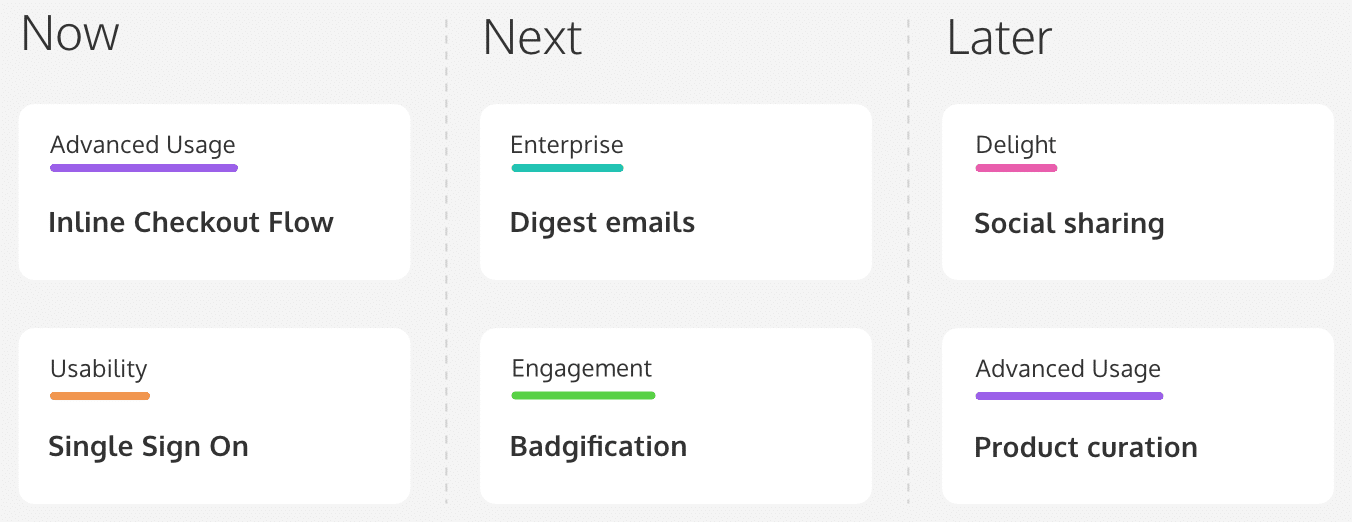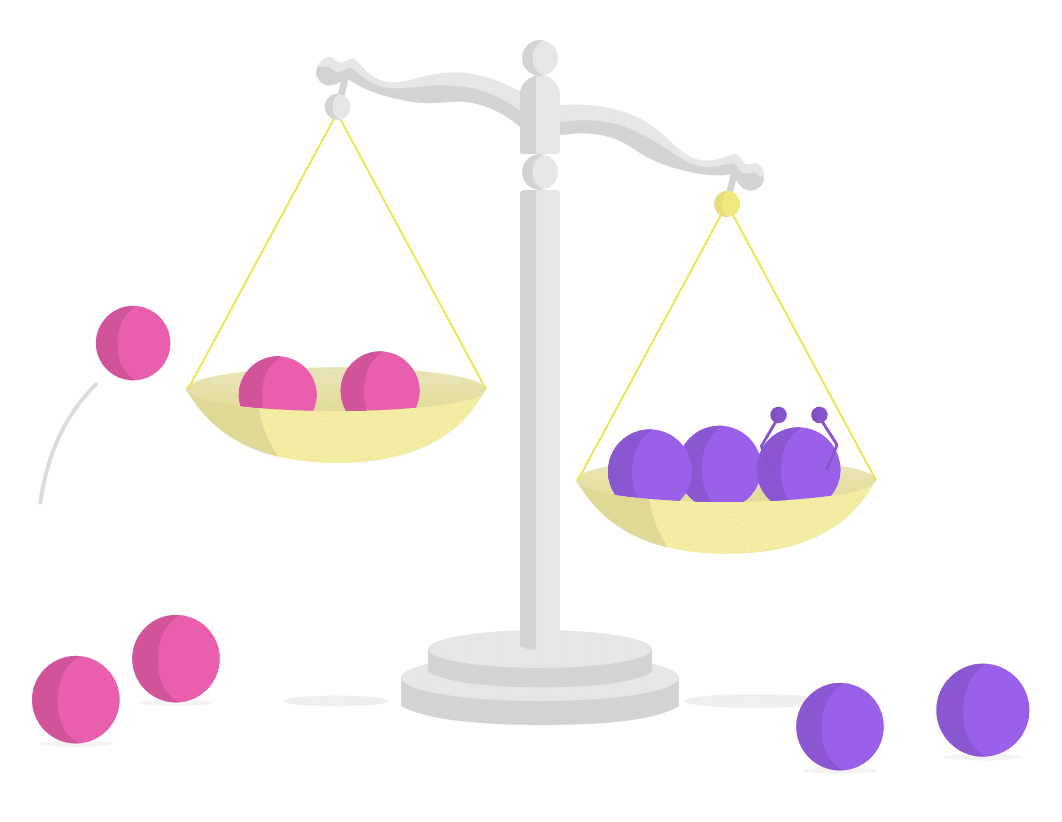ProdPad Is a Different Kind of Product Management Tool
It’s all about the mission
If you’re comparing product management tools then it’s as important to understand what a tool doesn’t do, as what it can do. At ProdPad, while there are plenty of things we don’t do, there are also some very good reasons why we choose not to do them.
We have lots of requests that we often say no to. While we explain the reasons to our customers on an individual basis, it’s really interesting to gather those reasons together. It’s all about product integrity, which helps us to align with our company mission to “change the way businesses build their products and services, by empowering the organization”.
Empowering the product management organization means helping the product team to work in a culture conducive to success. Many of the ProdPad team have been product managers. They’ve experienced the issues faced by product teams and have seen the effects of those issues on individuals, teams and businesses. We also hold regular roadmap clinics, so we talk to product managers constantly. This keeps our understanding of their pain points up-to-date.
What does our product management tool do?
We don’t do timeline roadmaps, we do lean roadmaps
We’ve written a lot about the reasons why we discourage timeline roadmaps. These are roadmaps built around a timeline format that encourage discussions about when a feature is released. These conversations should be on why it is planned and the problems it solves. A timeline focuses on release dates, rather than strategy, and hampers experimentation. This is key to an lean, innovative approach to product development. Don’t just take our word for it – look elsewhere. C. Todd Lombardo, who spoke on this at a Mind the Product conference, has collaborated with Bruce McCarthy, Evan Ryan and Michael Connors to write Roadmaps Relaunched.

Feature roadmaps are very much related to this topic. Granted, a list of features you plan to build is an important part of the roadmap. However, a list of features without any context means you end up with a roadmap that’s difficult to understand. ProdPad’s lean roadmap format, with initiatives tied back to objectives and key results, means that you can see what’s planned. You’re also able to see the expected outcomes for both your customers and your business.
We don’t do weighted scoring, we do holistic prioritization
Lots of product teams find themselves under pressure from managing a huge backlog, so they use data to make decisions. Weighted scoring relies on someone, usually the product manager, defining a scoring mechanism that everyone can agree upon. It means creating a list of criteria, and defining a weighting system that ensures the most important ideas rise to the top. While that sounds feasible initially, it is hard to maintain over a length of time. Priorities change, so the weighting mechanism needs to as well. As you collect feedback, conduct market analysis, build more features and adapt your business – the scores attributed to each idea need to be changed, too. While some data may be automated based on data from third-party systems, other scores could be more subjective and subject to bias.
Maintaining these scores is fundamental to accuracy. Getting behind on maintenance leads to a prioritization approach which could be based on flawed data. For this reason, ProdPad doesn’t include the facility to add complex scoring criteria.

However, it can help product managers to look at subsets of ideas based on a scale of impact vs effort. We’re not talking about an exact science here, but having a comparison of the high level business impact and delivery effort of different ideas can help to determine which of them should be validated. ProdPad includes a simple priority scoring mechanism which allows prioritization of ideas to be constantly reviewed and refined. Rather than relying on a subjective “algorithm”, product managers can use ProdPad’s lean roadmap to consider how ideas fit in with important initiatives and strategic objectives. By combining this with an experiment-driven approach to validation, the right ideas very quickly become clear. This stops the need for constant re-evaluation and maintenance of scoring.
We don’t do feature voting, we do useful feedback
We often get asked about customer feature voting, but we avoid this function in our Customer Feedback Portal. As product manager, it’s natural to want to share all your options with customers so that they can highlight their opinions on the biggest problems to solve. While this capability is important, you run the risk of introducing unconscious bias – and that’s why voting isn’t necessarily the right way to go.
You don’t want to show your market how many other people are interested in the idea on which you’re collecting feedback. It’s much easier to join a crowd of like-minded people than to stand on your own. Seeing an idea with a high number of votes is likely to encourage even more for the feature at the expense of less visible ideas. It’s better to show the ideas you’re considering and encourage your customers to tell you why they want you to work on them. You’ll get richer feedback, and every customer who gives you their thoughts reflects market evidence. You can use this to validate your product roadmap and identify ideas which have real merit.
This is why the ProdPad Customer Feedback Portal allows customers to send feedback about the problems they’re experiencing. They can also see a randomized list of ideas which the product team have selected for further investigation. It means customers see ideas in a different order each time they visit. There is no indication of which ideas are gaining the most feedback. We call it “feedback” rather than “feature requests”, implying that this is something we’re listening to, but not acting on straight away. It’s simply feedback, rather than a requirement that the product team has to comply with.
We don’t allow development to overwrite your plans, we keep your data safe
One of the great advantages of a product management tool is integration with development. Working on discovery before delivery, and pushing the specs over to a development tool like Jira means that the development team’s backlog is focused on what’s important, well-defined and ready to roll.
When you push from ProdPad to Jira (or Trello, Azure DevOps, TFS or any of the other development tools that you could integrate with), the status information is mapped back to ProdPad so that business stakeholders can see what progress has been made. What ProdPad doesn’t do is overwrite the specs in ProdPad based on changes which have happened in dev. While it might seem like a great idea to keep that data in sync, it can lead to problems where data owned by the product manager is changed without their knowledge or approval. Imagine a world where a developer could change the acceptance criteria on a story, and have that updated in the original specs without any kind of process to prevent it!
By preserving the data in ProdPad, there is a record of what was spec’d by the product manager. After that, it’s fine to make updates in development, and see a revision history of any changes which have occurred. Seeing your original plans change, without being able to see who did it and why, is not ok. That’s why we don’t allow the dev tool to overwrite data in ProdPad.
Preserving product integrity
All of this may sound great, but what does it mean for product managers? What problems does our product management tool solve that make it stand out from the crowd?
Using ProdPad means that product strategy is transparent and easy to understand. Product managers can share their roadmap without fear of communicating unrealistic and misleading release dates. Product managers will always need to maintain and nurture their backlog. A simple approach to prioritization, linked to roadmap initiatives and OKRs, results in a process that is easier to manage. It’s less time consuming and arguably more meaningful. Strategy and market forces makes decision making easier when you’re looking at what to build.
Essentially, we don’t build functionality into ProdPad if we think it is counterproductive to a good product culture. We provide solutions to problems getting in the way of the product team’s success. This is, let’s face it, tied directly back to company success. Sometimes that makes it hard for us. This is because we have to say “no” to customers, and wave goodbye to the money they might spend. We stand by our product integrity, that makes it easier for our market to know if ProdPad is right for them. Either they work the way we do, or because they aspire to do so.
That’s also the reason why we haven’t taken any external investment as we’ve built the company. Product manager success is a priority. It’s important that we can make informed decisions, rather than deciding what to do based on pressure from investors.
The product management tool that’s right for you
When you’re considering product management tools, first consider how you want your business to function. ProdPad supports a good product culture, which helps product managers pivot and be lean, solves problems (based on current market forces), and allows customer voices to be heard in an unbiased way.
Sign up to our monthly newsletter, The Outcome.
You’ll get all our exclusive tips, tricks and handy resources sent straight to your inbox.